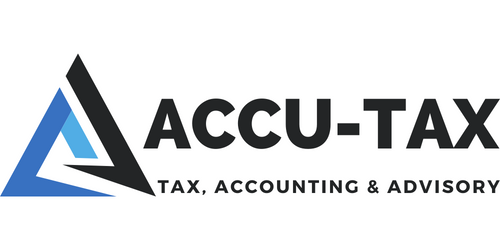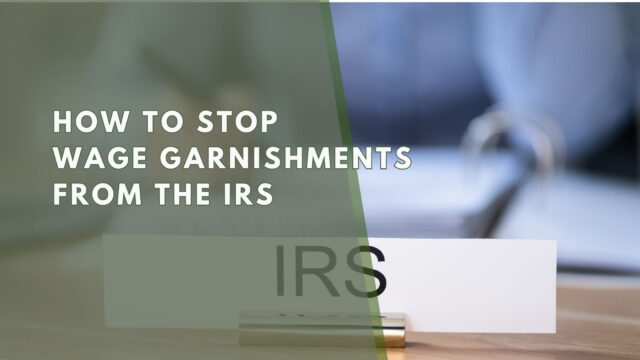How to Stop an IRS Wage Garnishment and Protect Your Paycheck
Few things create more anxiety than seeing your paycheck shrink because of an IRS wage garnishment. When you owe back taxes, the IRS has the power to take part of your income until the debt is paid off.
Fortunately, you still have control. The IRS must follow strict rules before seizing your wages, and several strategies can stop or reduce the garnishment.
In this guide, you’ll discover how wage garnishment works, what your rights are, and the most effective ways to stop it fast.
What Is an IRS Wage Garnishment?
An IRS wage garnishment, or wage levy, allows the IRS to collect unpaid taxes directly from your paycheck. Unlike regular creditors, the IRS doesn’t need a court order.
Once it issues Form 668-W, your employer must withhold part of your pay and send it to the IRS until the balance is cleared. This process continues until the debt is resolved or another agreement is made.
How the Process Works
Before taking your wages, the IRS must complete several legal steps. Understanding these steps helps you act before garnishment begins.
1. Notice and Demand for Payment
The IRS first sends a bill showing how much you owe.
2. Final Notice of Intent to Levy
If you don’t pay or respond, the IRS issues Letter 1058 or LT11—the Final Notice of Intent to Levy. This gives you 30 days to take action.
3. Your Right to a Hearing
During this time, you can file Form 12153 to request a Collection Due Process (CDP) hearing. Filing stops collection while your case is reviewed.
If you ignore the notice, the IRS may contact your employer and start garnishment after the 30-day period ends.
How Much Can the IRS Take?
The IRS won’t take your entire paycheck, but it can claim a large portion of it. The amount you keep depends on:
-
Your filing status
-
The number of dependents
-
The standard deduction for the year
Your employer will provide a form to report this information. If you don’t return it within three days, the IRS assumes you’re married filing separately with no dependents—the smallest possible exemption.
Tip: Check IRS Publication 1494 for the current exemption tables to see how much of your income is protected.
When Wage Garnishment Begins
Wage garnishment starts after you receive the final notice and fail to respond within 30 days. Once that window closes, the IRS instructs your employer to withhold money from your pay.
Because the process moves quickly, it’s crucial to respond as soon as you receive any IRS letter.
How to Stop an IRS Wage Garnishment
Even if garnishment has already begun, you still have options. These solutions can stop or reduce the impact and help you regain financial control.
1. Pay the Tax Debt in Full
Paying your balance immediately ends the garnishment. Once the IRS receives full payment, it releases the levy.
2. Set Up an Installment Agreement
If paying in full isn’t possible, request a monthly payment plan. After the IRS approves the plan, it releases the levy and lets you make affordable payments.
3. Submit an Offer in Compromise
If you can’t pay the full debt, you may qualify to settle for less. Submitting an Offer in Compromise (OIC) can pause or stop collection while the IRS reviews your offer.
4. Request Currently Not Collectible (CNC) Status
If paying would create financial hardship, you can request CNC status. This temporarily stops all collection activity, including wage garnishment.
5. File for a Collection Due Process Hearing
If you’re still within the 30-day period after receiving the Final Notice, file Form 12153. This stops the garnishment while the IRS reviews your case.
6. Prove Economic Hardship
If garnishment leaves you unable to afford essentials like housing, food, or medical care, the IRS must release the levy once you provide financial proof.
If the Garnishment Has Already Started
Don’t panic—there are still ways to fix it. Take these steps immediately:
-
Call the IRS using the number on your levy notice.
-
Submit financial documents to show hardship.
-
Request a payment plan or Offer in Compromise.
-
Ask for levy release once your agreement is accepted.
When the IRS agrees to release the levy, it notifies your employer to stop withholding wages right away.
How Long Does Wage Garnishment Last?
The IRS continues to garnish wages until:
-
The tax debt is fully paid
-
You enter an approved payment plan
-
The IRS releases the levy due to hardship or another reason
-
The 10-year collection period expires
Because interest and penalties grow over time, acting early prevents higher costs.
Your Rights and Relief Options
You have several rights under federal law. The IRS must release a levy if:
-
You’ve paid the debt or it’s no longer collectible
-
You’ve entered into an installment agreement
-
The levy causes economic hardship
-
The IRS issued the levy in error or too early
Knowing these rights helps you negotiate confidently and avoid unnecessary financial strain.
Practical Tips for Communicating with the IRS
Clear communication can make a major difference. Follow these tips:
-
Open every IRS notice immediately. Ignoring letters can cost you more.
-
Document all calls and correspondence. Keep names, dates, and details.
-
Be transparent. Honest financial information speeds up relief approvals.
-
Use IRS resources. Publications and the Taxpayer Advocate Service can guide you through complex cases.
Why Work with a Tax Professional?
IRS collection cases can be stressful and confusing. A tax professional—such as a CPA, enrolled agent, or tax attorney—can:
-
Deal directly with the IRS on your behalf
-
Negotiate payment plans or settlements
-
Help you stop wage garnishment quickly
-
Ensure your rights are fully protected
Having professional representation often speeds up resolution and reduces long-term costs.
Final Thoughts
IRS wage garnishments are serious, but they don’t have to ruin your finances. By acting quickly, knowing your rights, and working with the right professionals, you can stop garnishment, protect your income, and move toward financial stability.
If you’re currently facing an IRS levy, don’t wait for your next paycheck to shrink—contact a trusted tax resolution expert today.
References
[1] Levy – Internal Revenue Service
[2] Information about wage levies – Internal Revenue Service
[3] How do I get a levy released? | Internal Revenue Service


